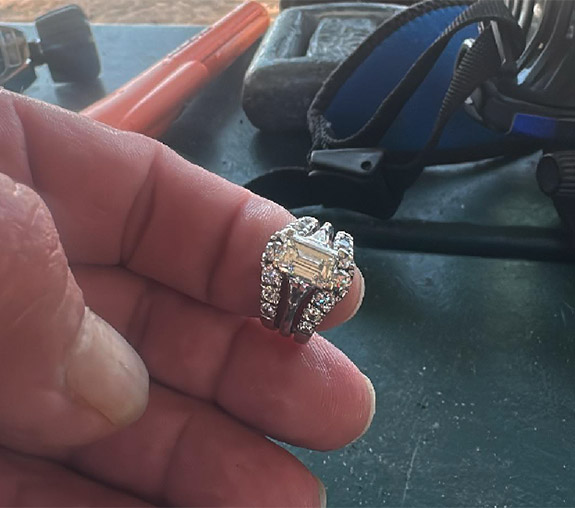
Dive Service Rescues 115-Year-Old Heirloom Wedding Ring From Texas Lake
A cherished 115-year-old wedding ring thought to be lost forever in a Texas lake has been miraculously recovered — thanks to the relentless efforts of
With gold trading near an all-time high, it might be a great time to take a closer look at another undeniably elegant noble metal, platinum.
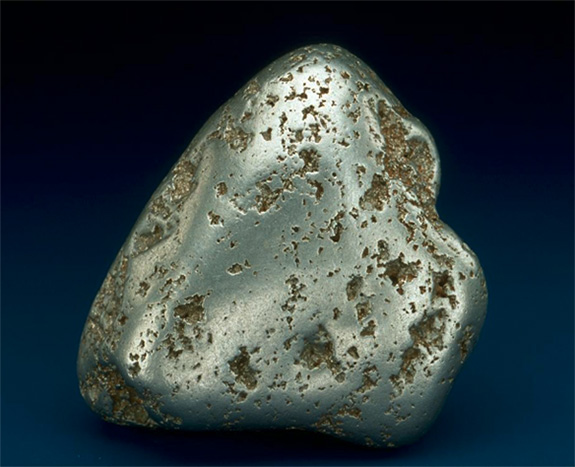
Gold was in the news last Friday as it hit $2,448 per ounce due to investors flocking to the precious metal as a hedge against inflation and international uncertainty. By contrast, an ounce of platinum was priced at $1,000 per ounce, about 41% of gold’s value.
Historically, platinum has traded at a premium to gold. In January of 2014, for instance, one could purchase an ounce of platinum for $1,378, while an ounce of gold sold for $1,225. In January of 1990, platinum stood at $475 and gold stood at $404.
But, then at the beginning of 2011, gold started to overtake platinum.
This was an unsettling phenomenon because platinum always reflected a higher status overall. The record industry, for instance, awards a gold album at 500,000 units and a platinum album at 1 million units. The American Express Platinum Card offers far more benefits than its Gold Card.
King Louis XVI of France once said that platinum was the “only metal fit for kings.” In the jewelry industry, platinum was always preferred over gold to secure the most valuable and famous gemstones in the world — including the 45.52-carat Hope Diamond.
The status of platinum in 2024 is not the first time it’s been undervalued.
In the 1500s, platinum was belittled and cast aside by the Spanish conquistadors who encountered the material while mining for silver in Rio Pinto, Colombia. They named the curious metal “platina” or “little silver.” In one version of the story, the conquistadors threw the platinum nuggets back into the river hoping they would ripen into silver. (Silver is trading today at $28.45 per ounce).
Here are some additional fun facts about platinum…
Platinum is 30 times more rare than gold. If all the platinum ever mined was melted and poured into an Olympic-sized pool, the platinum would barely reach your ankles. All the mind gold, however, would fill three Olympic-sized pools.
Platinum is stronger than gold. When platinum is scratched, the material moves aside and no platinum is lost. When gold is scratched, tiny bits flake away. This is why gold rings that are worn for a long period of time often need to be re-shanked.
Platinum jewelry is typically 90% to 95% pure and includes markings in the band that say “PLATINUM, PLAT, PT, PT950, 950PT or 900PT.” Canadian quality marks can say “”platinum,” “plat.” or “platine.” In the UK, the platinum marks will say “850,” “900,” “950” or “999.” Gold purity, on the other hand, is measured in karats. Most commonly, 14-karat gold is 14/24th (58.3%) gold and alloyed with other metals. Eighteen-karat gold contains 75% precious metal.
Platinum is a true white metal. White gold, by comparison, is actually yellow gold that has been mixed with other white metals and then plated with rhodium to give a bright white appearance. That plating does wear off over time and requires re-plating.
Platinum is hypoallergenic and an excellent choice for people with sensitive skin or allergies to other metals.
Platinum is 60% more dense than 14-karat gold. It’s a difference you can actually feel.
Platinum typically occurs as small grains and crystals in certain layered igneous rocks. The extraordinarily rare platinum nugget, above, weighs 444.4 grams (just under 1 pound) and is so special that it’s on permanent exhibit at the Smithsonian’s National Museum of Natural History in Washington, DC.
Credit: Photos by Chip Clark / Smithsonian.

A cherished 115-year-old wedding ring thought to be lost forever in a Texas lake has been miraculously recovered — thanks to the relentless efforts of

Welcome to Music Friday, when we spotlight songs that sparkle with references to jewelry, gemstones or precious metals. Today, we’re revisiting a luminous synthpop anthem
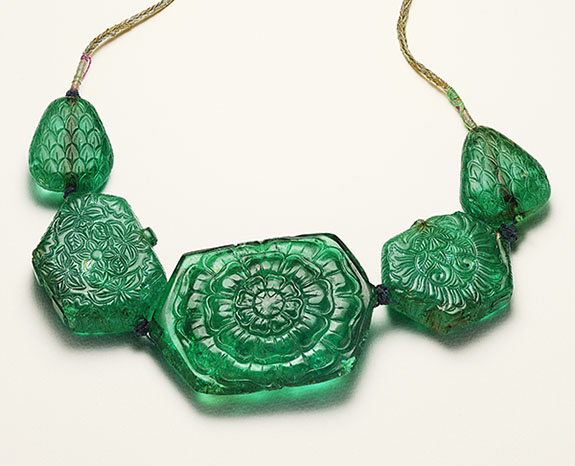
Last week’s Magnificent Jewels sale at Christie’s New York dazzled collectors and historians alike, thanks in large part to the headline-grabbing success of the “Mughal
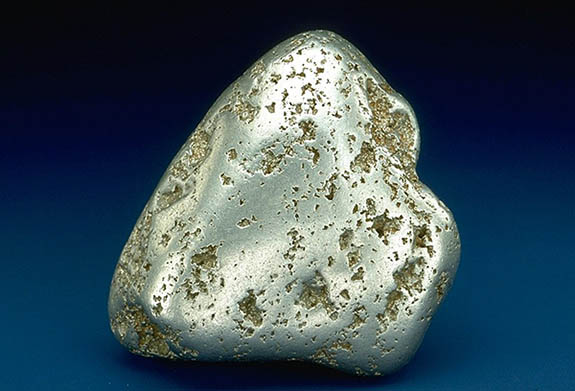
Platinum is enjoying a powerful rally in 2025, recently topping $1,330 per ounce — a 10-year high and a 44% gain since the start of


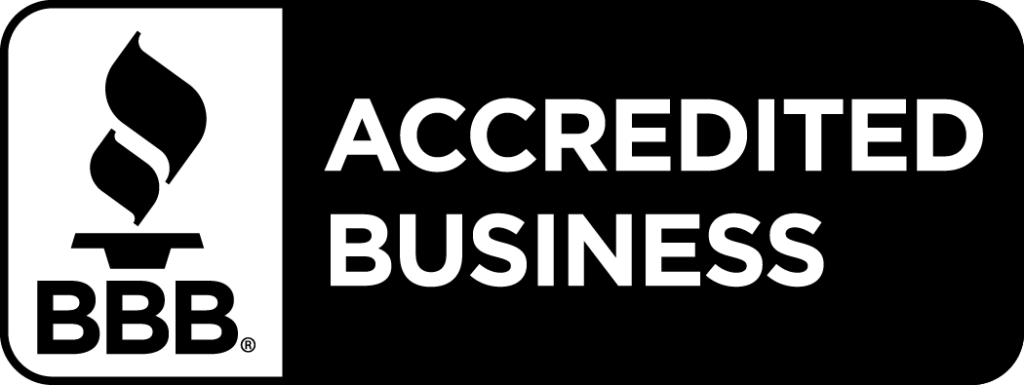



Celebrate Your Everlasting Love with Elliott's Jewelers!
Mark another year of cherished memories with our breathtaking Anniversary Ring, exclusively at Elliott's Jewelers in Huntsville, TX.
This exquisite ring features five natural bezel-set pear-shaped diamonds, meticulously crafted in 14kt yellow gold. With a remarkable 1.19 carats total weight of dazzling diamonds, this piece is a true testament to enduring love and sophisticated style.
Imagine the sparkle on her hand, a symbol of your unique journey together. This isn't just a ring; it's a future heirloom, a radiant reminder of your commitment.
Ready to see this stunning anniversary ring in person? We invite you to schedule a private viewing at your convenience.
Click here to book your appointment: www.elliottsjewlers.com/book-an-appointment
#ElliottsJewelers #AnniversaryRing #DiamondRing #PearShapedDiamonds #YellowGold #HuntsvilleTX #FineJewelry #CelebrateLove #TimelessTreasure
#TimelessTreasures #timelesstreasuresfabrics ... See MoreSee Less
Shop Now
0 CommentsComment on Facebook
Make a Statement with This Dazzling Orange-Yellow Diamond Engagement Ring! 🧡💛
Imagine her reaction when you present this one-of-a-kind Ladies Fancy Orange-Yellow Diamond Engagement Ring from Elliott's Jewelers!
This stunning ring features a vibrant 1.05 carat Orange-Yellow Radiant Cut center diamond, with SI1 clarity, that radiates warmth and brilliance. Complementing this magnificent center stone are 0.20 total weight Trillion side diamonds, adding an exquisite touch of sparkle. All set in elegant 14k White Gold, this ring is truly a masterpiece.
It's more than just a ring; it's a symbol of your unique love story.
Ready to make her dreams come true? Visit Elliott's Jewelers in Huntsville, TX, to see this breathtaking ring in person! Make an appointment at www.elliottsjewelers.com/book-an-appointment/
#OrangeYellowDiamond #EngagementRing #FancyDiamond #RadiantCut #DiamondRing #UniqueEngagementRing #HuntsvilleJeweler #ElliottsJewelers #SayYes #SheWillLoveIt #14kWhiteGold
#14kwhitegold ... See MoreSee Less
0 CommentsComment on Facebook
🌟 Protect Your Precious Jewelry with Confidence! 🌟
Ensure your cherished pieces are safeguarded against life's surprises. With our comprehensive jewelry insurance, your items will be repaired or replaced to their original kind and quality, giving you peace of mind.
Ready for a professional appraisal? Experience our six-step process designed for your convenience and satisfaction, led by owner Elliott Herzlich. Discover how easy it is to protect your investment!
Learn more here: [Elliott's Appraisal Services](www.elliottsjewelers.com/appraisal-services/)
#JewelryInsurance #JewelryAppraisal #ElliottsJewelers #ProtectYourInvestment #LuxuryJewelry #JewelryCare ... See MoreSee Less
Act Now: Get It Insured
www.jewelersmutual.com
Dedicated Jewelry Insurance Wear your jewelry worry-free with insurance from Jewelers Mutual, trusted for over 110 years. CHECK YOUR RATE ReviewsWhat's CoveredCostHow It WorksFAQs What Types of Jewelr...0 CommentsComment on Facebook
We are taking appointments at www.elliottsjewelers.com/book-an-appointment/ . ... See MoreSee Less
2 CommentsComment on Facebook
The Heart of a Personal Jeweler -- Elliott's Jewelers, Huntsville, TX
Want to learn more about Elliott's Jewelers?
Check out our story in Voyage Houston magazine! voyagehouston.com/.../check-out-elliott-herzlichs...
At Elliott’s Jewelers, clients aren’t just customers—they’re relationships built for life. With a blend of old-world craftsmanship, new-world sensibility, and unwavering integrity, Elliott has crafted something rare in modern retail: a business that prioritizes people above all else.
To book a private consultation or learn more about Elliott’s Jewelers, visit www.elliottsjewelers.com. ... See MoreSee Less
Learn More
0 CommentsComment on Facebook
✨ Why Choose a Diamond from Elliott’s Jewelers? ✨
A natural diamond is more than a purchase; it’s a timeless symbol of your love story, your shared memories, and the beautiful future you envision together. 💍❤️
At Elliott’s Jewelers, we offer a personal touch that sets us apart. When you choose your diamond with us, you're not just buying a gem; you're creating an experience. Our trusted jewelers will be by your side, guiding you every step of the way, ensuring you find the perfect diamond that resonates with your unique love.
Don't leave one of life's most precious moments to chance. Embrace the luxury of personalized service and make a confident choice that reflects your heart.
💖 Schedule your private consultation today, and let Elliott help you discover the diamond that feels like it was made just for you.
👉 www.elliottsjewelers.com/book-an-appointment
See available diamonds here: www.elliottsjewelers.com/diamonds-with-grading-report/
#ElliottsJewelers #DiamondLove #EngagementRing #LoveStory #ForeverStartsHere #PersonalJeweler #TimelessBeauty ... See MoreSee Less
Shop Now
Elliott's Jewelers, Huntsville TX Favorite Jeweler
www.elliottsjewelers.com
I get to create beautiful, memorable and emotional jewelry for customers who become lifelong friends. Call me to learn more.0 CommentsComment on Facebook
### Discover the Art of Custom Engagement Rings at Elliott’s Jewelers. Learn more about this ring and others at
www.elliottsjewelers.com/shop
✨ The beauty of a custom engagement ring lies in the intricate details—and in the journey of collaborating with a personal jeweler who truly understands your lifestyle and values. At Elliott’s Jewelers, we dedicate ourselves to bringing your vision to life, crafting a ring that's uniquely yours. 💍Elliott's Jewelers only offers genuine, natural, mined diamonds
📞 Call Elliott's Jewelers today at (936) 661-5363 or book an appointment online—available 6 days a week! www.elliottsjewelers.com/book-an-appointment/
🛍️ Browse our stunning collections online: www.elliottsjewelers.com/shop/
#CustomJewelry #EngagementRing #ElliottsJewelers #JewelryDesign #Personalized #Craftsmanship #Love #Engagement #JewelryShopping #UniqueDesigns ... See MoreSee Less
Call Now
2 CommentsComment on Facebook
✨ Your Jewelry Has an Irreplaceable Story to Tell ✨
The jewelry you’ve inherited is more than just exquisite; it's a treasured chapter of your family's legacy, a timeless piece that can be passed down through generations.
Every ring, bracelet, and pendant embodies the love, memories, and milestones that have shaped your family's journey. When you choose Elliott’s Jewelers, you’re not only preserving jewelry—you’re honoring the deep-rooted connections that bind your family together.
At Elliott's, we provide a comprehensive range of services to restore and protect your beloved heirlooms, including:
💍 Ring resizing
💎 Stone replacement
🔩 Prong repair & retipping
🔗 Chain & clasp repairs
✨ Professional cleaning & polishing
🔄 Full restorations
🎨 Custom redesigns, honoring the original while crafting something uniquely new.
Every repair is conducted with the same love and attention that your family deserves. Together, we’ll breathe new life into your cherished pieces, allowing you to wear them with pride and continue their story for many more years to come.
📅 Schedule your repair appointment with Elliott today, and let’s celebrate your family’s extraordinary legacy! Schedule your appointment here at www.elliottsjewelers.com/book-an-appointment/ ... See MoreSee Less
Book Travel
0 CommentsComment on Facebook
## Celebrate Your Everlasting Love with a Natural Diamond Ring from Elliott's Jewelers
Special moments deserve a ring as meaningful as the love they represent. At Elliott's Jewelers, we believe your unique story deserves to be told through the timeless brilliance of a **natural, earth-mined diamond**. Each diamond, forged deep within the earth, carries a history as rich and profound as the love you share.
We're here for every "yes," every happy tear, and every milestone yet to come. Let us help you create a ring that beautifully encapsulates your love and memories for a lifetime. Our commitment to exceptional quality and personalized service ensures your journey with us is as special as the love you're celebrating.
**Ready to find the perfect symbol of your devotion?**
* **Call Elliott's Jewelers today at (936) 661-5363** to speak with one of our diamond experts.
* **Book your personal appointment online:** We're available 6 days a week to assist you! Visit our booking page here: www.elliottsjewelers.com/book-an-appointment/
* **Browse our exquisite collection online:** --- www.elliottsjewelers.com/diamonds-with-grading-report/
Let's create a ring that will be cherished for generations. ... See MoreSee Less
Learn More
0 CommentsComment on Facebook
✨ Your Jewelry Has an Irreplaceable Story to Tell ✨
The jewelry you’ve inherited is more than just exquisite; it's a treasured chapter of your family's legacy, a timeless piece that can be passed down through generations. Every ring, bracelet, and pendant embodies the love, memories, and milestones that have shaped your family's journey. When you choose Elliott’s Jewelers, you’re not only preserving jewelry—you’re honoring the deep-rooted connections that bind your family together.
At Elliott's, we provide a comprehensive range of services to restore and protect your beloved heirlooms, including:
💍 Ring resizing
💎 Stone replacement
🔩 Prong repair & retipping
🔗 Chain & clasp repairs
✨ Professional cleaning & polishing
🔄 Full restorations
🎨 Custom redesigns, honoring the original while crafting something uniquely new
Every repair is conducted with the same love and attention that your family deserves. Together, we’ll breathe new life into your cherished pieces, allowing you to wear them with pride and continue their story for many more years to come.
📅 Schedule your repair appointment with Elliott today, and let’s celebrate your family’s extraordinary legacy! Schedule your appointment here at www.elliottsjewelers.com/book-an-appointment/ ... See MoreSee Less
Book Travel
0 CommentsComment on Facebook
### Discover the Art of Custom Engagement Rings at Elliott’s Jewelers.
Learn more about the ring featured below: www.elliottsjewelers.com/product/14-kt-white-gold-radiant-cut-diamond-engagement-ring-with-2-21-c...
✨ The beauty of a custom engagement ring lies in the intricate details—and in the journey of collaborating with a personal jeweler who truly understands your lifestyle and values. At Elliott’s Jewelers, we dedicate ourselves to bringing your vision to life, crafting a ring that's uniquely yours. 💍Elliott's Jewelers only offers genuine, natural, mined diamonds
📞 Call Elliott's Jewelers today at (936) 661-5363 or book an appointment online—available 6 days a week! www.elliottsjewelers.com/book-an-appointment/
🛍️ Browse our stunning collections online: www.elliottsjewelers.com/shop/
#CustomJewelry #EngagementRing #ElliottsJewelers #JewelryDesign #Personalized #Craftsmanship #Love #Engagement #JewelryShopping #UniqueDesigns ... See MoreSee Less
Shop Now
Shop - Elliott's Jewelers
www.elliottsjewelers.com
Appointments available Tuesday through Saturday. Please schedule at www.elliottsjewelers.com/book-an-appointment/ or visit www.elliottsjewelers.com/shop ... See MoreSee Less4 CommentsComment on Facebook
Want to learn more about Elliott's Jewelers? Check out our story in Voyage Houston magazine! voyagehouston.com/interview/check-out-elliott-herzlichs-story
The Heart of a Personal Jeweler
At Elliott’s Jewelers, clients aren’t just customers—they’re relationships built for life. With a blend of old-world craftsmanship, new-world sensibility, and unwavering integrity, Elliott has crafted something rare in modern retail: a business that prioritizes people above all else.
To book a private consultation or learn more about Elliott’s Jewelers, visit www.elliottsjewelers.com. ... See MoreSee Less
Call Now
3 CommentsComment on Facebook